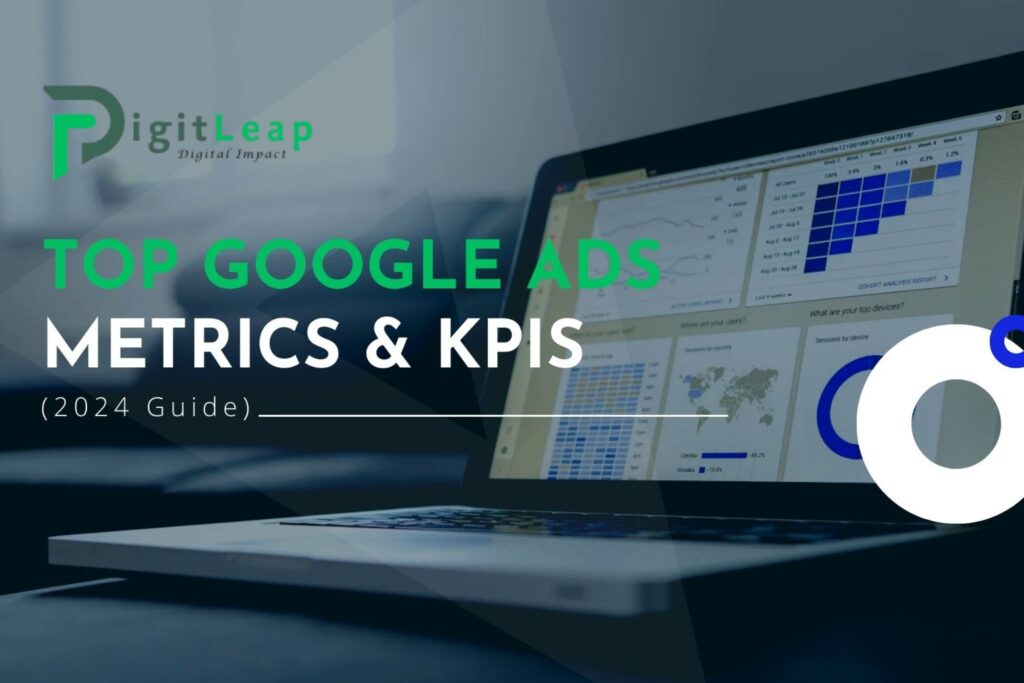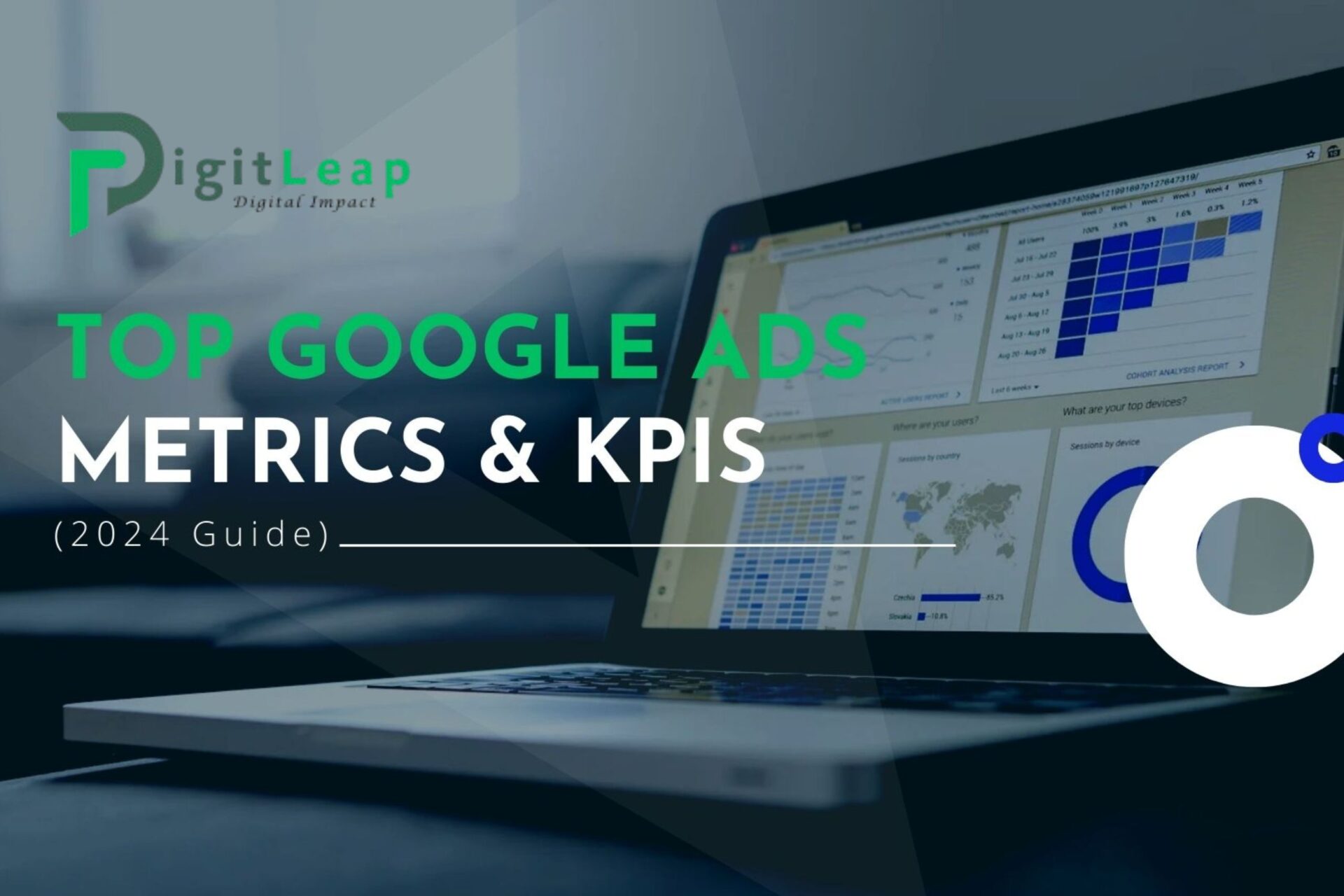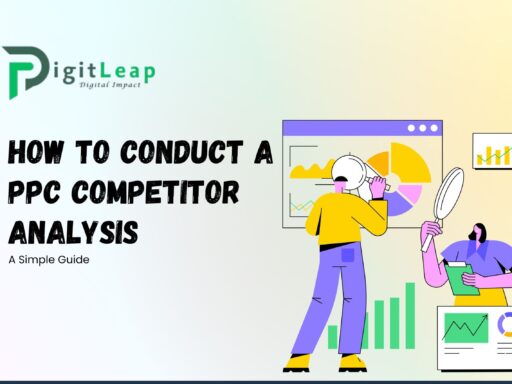Top Google Ads Metrics & KPIs (2025 Guide)
Google Ads success is all about data. Whether you’re running Search, Display, Shopping, or Video campaigns, tracking the right Key Performance Indicators (KPIs) ensures your budget is well-spent and your ads perform efficiently.
In this 2025 guide, we’ll cover the most important Google Ads metrics that you should monitor to improve your campaigns and maximize ROI.

1. Click-Through Rate (CTR)
✅ Formula: (Total Clicks / Total Impressions) × 100
CTR measures the percentage of users who click on your ad after seeing it. A higher CTR indicates strong ad relevance and effective targeting.
How to Improve CTR?
- Use compelling ad copy with strong CTAs.
- Add ad extensions (sitelinks, callouts, structured snippets).
- Optimize keywords and audience targeting for better relevance.
📌 Benchmark: A good CTR varies by industry but typically falls between 3% – 7% for Search Ads.
2. Quality Score
Google assigns a Quality Score (1-10) to your keywords based on:
✔️ Expected CTR
✔️ Ad relevance
✔️ Landing page experience
Why is Quality Score Important?
- Higher Quality Scores = Lower CPCs and better ad placements.
- Google rewards high-relevance ads with better rankings.
🔹 Pro Tip: Improve ad relevance and landing page experience to boost your score.
3. Cost-Per-Click (CPC)
✅ Formula: (Total Cost / Total Clicks)
CPC tells you how much you’re paying per ad click. It varies based on competition, keyword bids, and Quality Score.
How to Lower CPC?
- Refine keyword match types (Broad → Phrase → Exact).
- Improve Ad Rank (higher Quality Score = lower CPC).
- Use negative keywords to filter irrelevant traffic.
📌 Benchmark: CPC depends on the industry. For Google Search Ads, the average CPC ranges from $1 – $5, while high-competition industries (legal, finance) can go above $50 per click.
4. Conversion Rate (CVR)
✅ Formula: (Total Conversions / Total Clicks) × 100
CVR measures how many users complete a desired action (purchase, signup, call, etc.) after clicking your ad.
How to Improve Conversion Rate?
✔️ Optimize landing pages for better user experience.
✔️ Use A/B testing for ad copy and design.
✔️ Offer stronger incentives (discounts, free trials, limited-time offers).
📌 Benchmark: A strong conversion rate is typically 5% – 10%, but it varies by industry.
5. Return on Ad Spend (ROAS)
✅ Formula: (Revenue from Ads / Ad Spend)
ROAS helps you measure profitability—for every dollar spent on ads, how much revenue you generate.
How to Maximize ROAS?
✔️ Focus on high-intent keywords.
✔️ Optimize landing page experience.
✔️ Use audience segmentation to retarget engaged users.
📌 Benchmark: A healthy ROAS is typically 3:1 or higher, meaning you earn $3 for every $1 spent.
6. Impression Share
✅ Formula: (Your Ad Impressions / Total Eligible Impressions) × 100
Impression Share tells you how often your ads appear compared to how often they could appear.
How to Increase Impression Share?
- Increase your bids on high-performing keywords.
- Improve ad relevance and Quality Score.
- Expand your daily budget to avoid ad limitations.
📌 Benchmark: A 70%+ Impression Share means you’re highly visible; anything below 50% suggests room for improvement.
7. Cost Per Acquisition (CPA)
✅ Formula: (Total Ad Spend / Total Conversions)
CPA tells you how much it costs to acquire a new customer or lead.
How to Reduce CPA?
✔️ Improve landing page conversions.
✔️ Use audience targeting to reach high-intent users.
✔️ Optimize ad placements and bidding strategies.
📌 Benchmark: A good CPA depends on your industry, but most businesses aim for $10 – $50 per acquisition.
8. Ad Rank & Position
Google determines your ad placement based on:
- Your bid amount
- Your Quality Score
- Expected impact of ad extensions
Why Does It Matter?
Higher Ad Rank means better positioning and lower CPCs.
🔹 Pro Tip: Improving Ad Relevance and CTR can boost your ranking without increasing bids.
9. Bounce Rate
Bounce Rate measures how many visitors leave your landing page without taking action.
How to Reduce Bounce Rate?
- Match ad copy with landing page content.
- Improve page speed & mobile responsiveness.
- Use clear CTAs to guide users toward conversion.
📌 Benchmark: A Bounce Rate below 50% is considered good for PPC landing pages.
10. Audience Engagement & Retargeting Metrics
Tracking engagement metrics helps improve PPC retargeting efforts.
Key Metrics to Track:
✔️ Time on Page – Indicates user interest in your landing page.
✔️ Pages per Session – Shows how deeply users engage with your content.
✔️ Retargeting CTR – Measures how well your remarketing ads perform.
🔹 Pro Tip: Use Google Analytics 4 (GA4) and Google Ads Audience Insights to track and refine audience segments.
Final Thoughts
Google Ads is all about data-driven decisions. By monitoring the right PPC metrics, you can fine-tune your campaigns for higher conversions, lower costs, and maximum ROI.
Key Takeaways:
✅ CTR, CPC, and Quality Score determine ad effectiveness.
✅ Conversion Rate, ROAS, and CPA measure profitability.
✅ Impression Share and Ad Rank affect visibility.
✅ Engagement & Retargeting metrics improve long-term performance.






